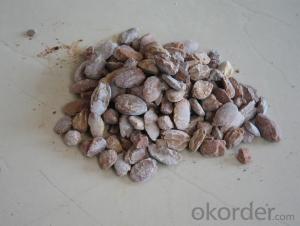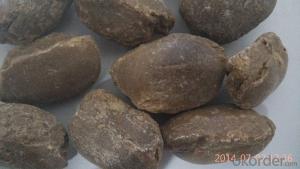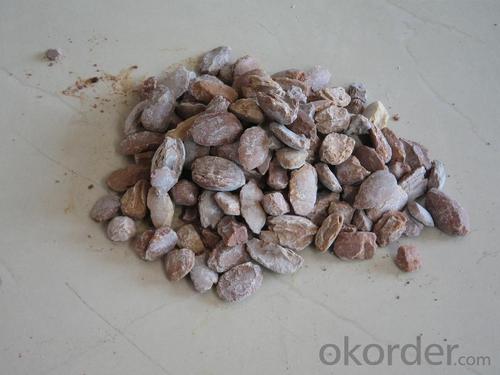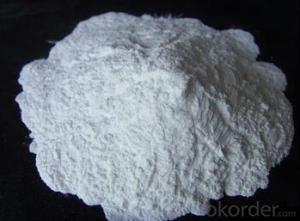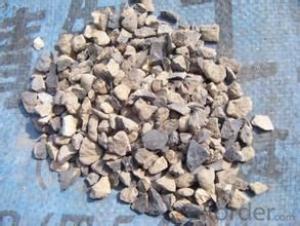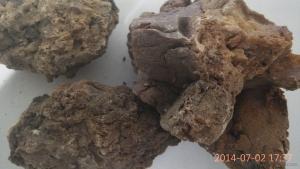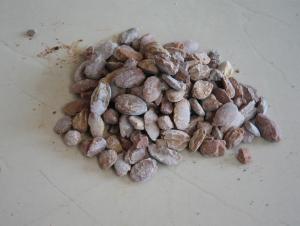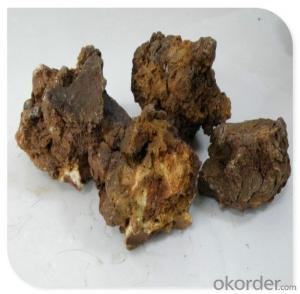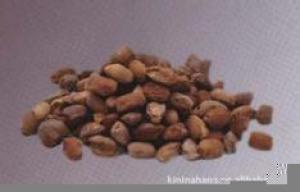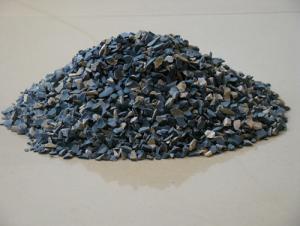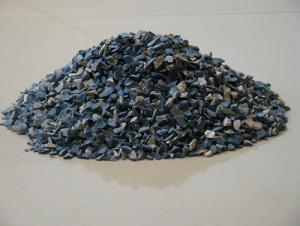Raw Materials for Refractory:Dead Burnt Magnesite with Good Quality and Good Price (DBM)
- Loading Port:
- Qingdao
- Payment Terms:
- TT or LC
- Min Order Qty:
- 50 m.t
- Supply Capability:
- 5000 m.t/month
OKorder Service Pledge
OKorder Financial Service
You Might Also Like
Dead Burnt Magnesite DBM
Main products level
0-1mm
1-3mm
3-5mm
0-10mm
200mesh (90% through)
325mesh
Specification
Grade | MgO (min.) | SiO2 (max.) | CaO (max.) | Fe2O3 (max.) | Al2O3 (max.) | L.O.I. (typical) |
mesh |
DBM90 | 90.00% | 1.00% | 1.50% | 0.70% | 0.10% | 1.70% |
0-400 |
DBM95 | 95.00% | 1.00% | 1.50% | 0.80% | 0.10% | 2.60% | |
DBM96 | 96.00% | 1.50% | 2.50% | 0.80% | 0.30% | 2.90% | |
DBM97 | 97.00% | 3.00% | 2.50% | 0.80% | 0.30% | 3.40% |
Usage
Mainly used in producing common magnesite brick, magnesite aluminum brick, magnesite chrome brick, gunning mix, hot patching mix for converter and EAF ect.
Features
Our factory produce the products of the Dead-burned magnesite are selected natural magnesite, it is produced by mine-selecting, purifying, calcimine in shaft kiln. It is an ideal material for unshaped refractory material, the final products are used in open hearth furnace, electric furnace bottom and furnace's lining tamping.
- Q: Who knows what is the standard of insulation material whose fire proof is level A?
- Non combustible materials of level A: WW inorganic active wall thermal insulation material, Cement foaming thermal insulation board, Glazed hollow bead insulation mortar, rock wool board, Glass wool board, Foam ceramic.Non combustible materials of level A, endowed with low density, low thermal conductivity, higher bearing capacity, convenient construction , economy and durability, are widely used in heat pipe, heat equipment, other industrial pipeline equipment , thermal insulating materials on industrial buildings, and used as heat preservation, thermal insulation, sound absorption materials of industrial and civic buildings.Non combustible materials of level A are used more for refractory protection coating material of steel structure because of its good thermal stability.
- Q: What kinds of refractory will be used in kiln of sintering ceramics?
- If it is ordinary ceramic, you can use ordinary clay bricks and high alumina brick, adding calcium silicate board, the insulating brick and cotton fiber.
- Q: What refractories have good mechanical property resistance and heat expansion and cold contraction property?
- Aluminium oxide ceramics. I would like to know that what kinds of refractory materials can combine together and what kind of masonry way can be used for these materials so as to achieve the perfect combination.
- Q: How to make fire resistant materials for building stoves
- Legend of the old version has been upgraded, or can not enter the server, is not legend stopped?
- Q: Which brand of AAA refractory is good?
- Foshan Nanhai Yanbu Shuying fire-resistant insulation material is very good, and it is a professional company of the production and sale of refractories. Our company specializes in the production of refractory bricks, refractory bricks, refractory castable, refractory aggregate, refractory materials, bauxite, alumina bricks and to undertake the production of various common refractory bricks and non-sizing bricks. The Zhengzhou Fire High Temperature Materials Co., Ltd. is also a good company. It is a collection of R & D and production company. The company mainly produces refractories, refractory bricks, refractory castable, refractory aggregate, refractory materials, special refractory bricks.
- Q: How to deiron refractory?
- Deironing refractory can take physical methods into consideration, such as magnetic?separation, reselection, etc. And it can also take chemical methods, such as flotation.
- Q: Why should graphitic refractory materials be used now that graphite can burn?
- In theory, any substance can burn as long as certain temperature is reached. Graphite is turned from diamond under anaerobic condition and at high temperature of 2 000 ~ 3 000 ℃. that is to say, ignition point of graphite (lamellar graphite ) under anaerobic condition will be at least above 3 000 ℃. There are many types of graphite, and their ignition points are also different. Ignition point of pyrolytic graphite is much low. Except for a few cutting-edge areas, fire endurance demand for most areas in daily life (eg. brake pad will add a certain amount of graphite) is under 1000 ℃. Therefore, graphite can be used as refractory material. That is, graphite can both burn and can be used as refractory material, which are not contradictory.
- Q: What does refractory mean?
- Basic refractory material generally refers to Magnesium Oxide or Magnesium Oxide and calcium oxide as the main component of refractory materials. This kind of refractory material has higher refractoriness and strong resistance to alkaline slag.
- Q: what textures of furnace refractories are good?
- Common ceramics use ordinary clay and high alumina bricks, as well as thermal insulation bricks, calcium silicate boards and fiber cotton. The vessels fired with potter's earth are called pottery, and the vessels fired with porcelain clay are called porcelain. Ceramic is generic term of pottery, stoneware and porcelain. The objects taking the two different types of clay as the raw materials, like, potter's earth and porcelain clay, and made through the technological process of ingredients, forming, drying and roasting, ect. can be called ceramics.
- Q: Where is the development of refractory industry?
- The rapid development of continuous casting technology of its related @ China @4 honing refractories develop and increase in variety and quality, continuous development of refractories for the continuous casting billet continuous casting production and quality have a significant impact. Especially, the completion and operation of Baosteel have greatly promoted the technological progress of refractory materials in China, and the refractory materials for continuous casting have made great progress both in variety and in quality.
Send your message to us
Raw Materials for Refractory:Dead Burnt Magnesite with Good Quality and Good Price (DBM)
- Loading Port:
- Qingdao
- Payment Terms:
- TT or LC
- Min Order Qty:
- 50 m.t
- Supply Capability:
- 5000 m.t/month
OKorder Service Pledge
OKorder Financial Service
Similar products
Hot products
Hot Searches
Related keywords
